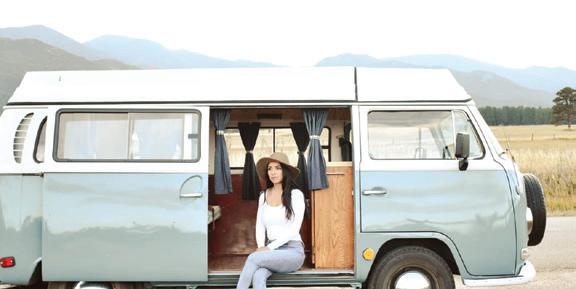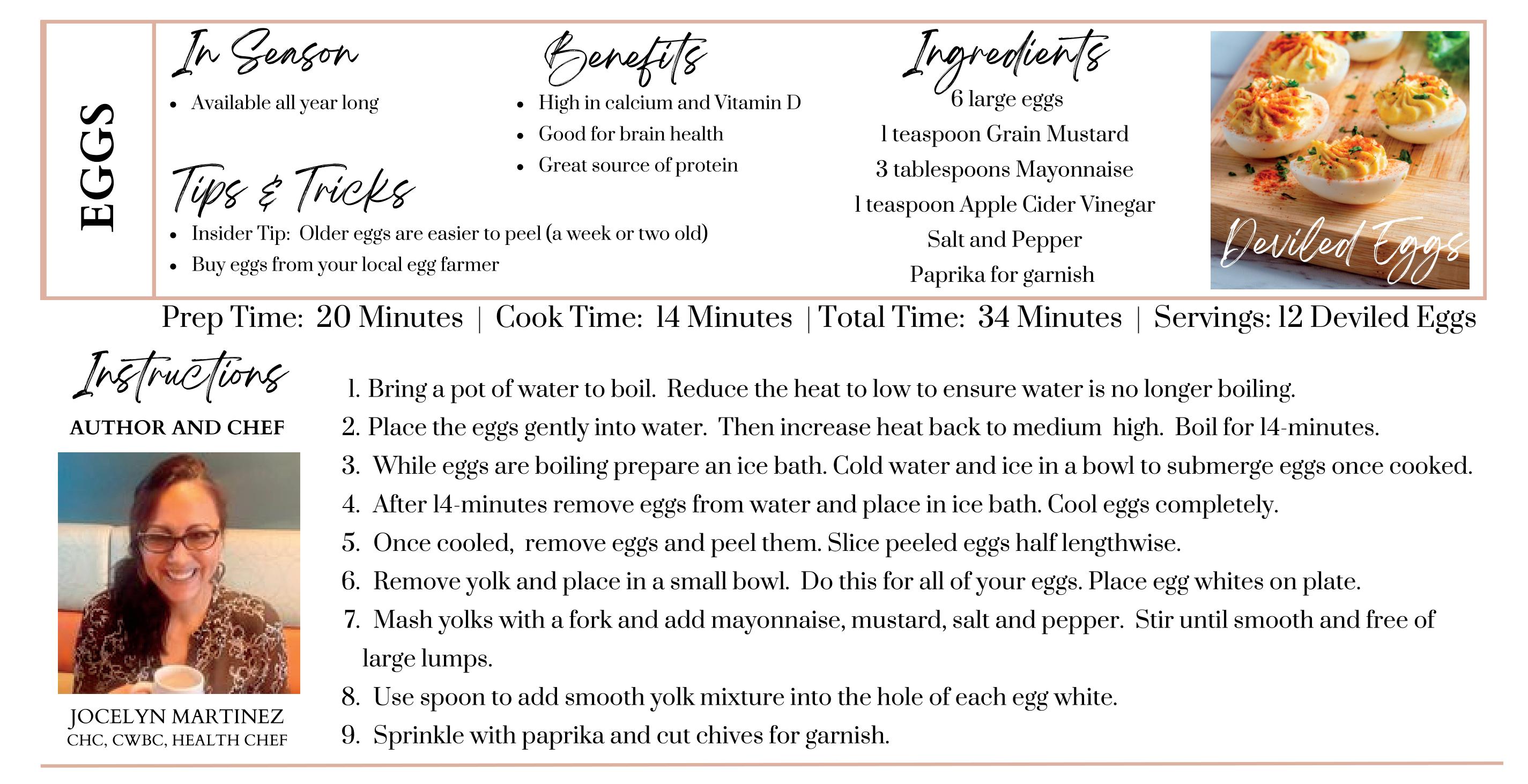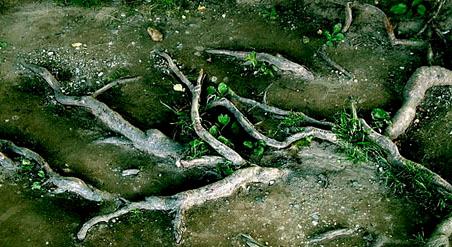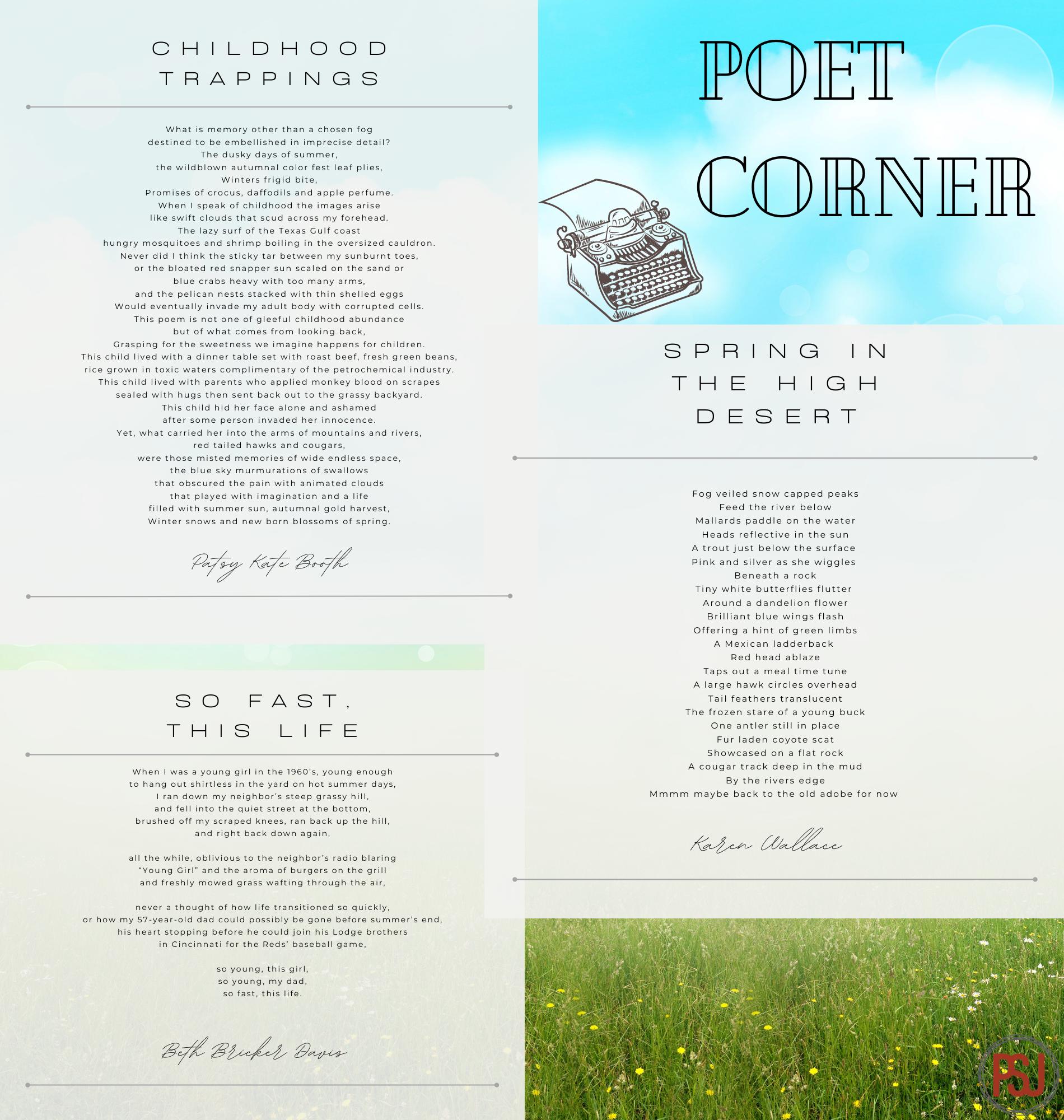
5 minute read
THRIVE! with Rachel
By Rachel Kutskill
The interconnected network of matter that lies under the earth’s outermost layers of the crust, the only area that we are capable of making direct contact with, is full of life-sustaining minerals and organic compounds. We dig our hands into this layer each year, as the ground thaws and the warm sun brings movement and life, inspiring a joyful and hopeful time of year. Spring.
Advertisement
This is a time when gardens, teeming with life, transform. As trees, flowers, birds, bees and butterflies become excited once again with the buzz of this rhythmic transition—the season of beginnings. It is quite inexplicable, the smells and feelings associated with spring, but every person has that distinct moment when the senses determine this fresh season is upon us. Moods lighten, smiles appear for no reason at all, eyes close as deep breathes take in the surrounding smells and sounds, each footstep seems to be lighter—springy—and the vitality of the community perks back up.
Pueblo, itself, has the mechanisms to thrive. With a milder winter climate than our northern neighbor, over 250 days of sunshine annually, a confluence of two, extensive water systems, plentiful farms, the sheer grit of those who have lived here for genera-
The Pueblo Star Journal (PSJ) Happiness Index will rate our suggestions in terms of: tions, and a sense of this energetic unknown, all binds its people and community together. As you walk through various parts of town, the togetherness that can be felt by neighbors who have relied on each other to succeed, from businesses, to central hubs, to residential communities, have understood the vitality of our town is a result of this connection. This web-like bond is resilient.
Social support- Does this help connect us as a community and is it inclusive?
Healthy life expectancy- Does this potentially prolong life to a high standard of living and without harm or risk? Freedoms making life choices - Is this free from imposition on others or ourselves?
Generosity - How cost effective is this for others and ourselves?
The diversity of our community can be valued as one of the strengths to how our community succeeds, just as soil biodiversity is important for plants and microorganisms to thrive. At the “Sun, soil, water” Ag Summit put on by the Pueblo Food Project last month, experts spoke on various topics that intertwined to form the network of sustainability that Pueblo has to offer in regards to our food and water components. Mary Dixon, a Ph.D student in the horticulture department at Colorado State University in Fort Collins, spoke on backyard soil reclamation and how to support the ecosystem that is underfoot.
Photography by Lyss Natural light photographer in Pueblo Colorado & surrounding areas.
According to Dixon, there are principles for sustaining soil health in order for the plant population to thrive. Pueblo is known for its clay soils with high PH levels. But with a few amendments to the dirt we have just outside our doors, we too can have a thriving, biodiverse, plant ecosystem in our own yards. Dixon added that by using organic compounds such as pea gravel, perlite or types of matter that are fibrous, long and straw-like, we can create a soil environment that will absorb water and nutrients, thus creating a diverse population of microorganisms, all needed for a healthy garden and yard.
Another point Dixon addressed, that seemed quite valuable, is the reduction of soil disturbance. So hold onto your tillers a moment, this may change your mind. The mycorrhizal network is a valuable connection of plant roots and an entire fungal system located underground. This system is one of the driving forces of how plants can thrive in imperfect growing environments by transferring nutrients and minerals from one species to another. The precarious network is held together and bonded in a web-like community, and disturbance to the mycorrhiza can be detrimental to the entire population. An abundance of tilling and soil turning will break apart these webbed communities causing surrounding stress and increased time to rebuild. Dixon recommended adding mulch amendments to an established soil system such as hay, pine needles and grass clippings to reduce evaporation, feed the soil and reduce soil disruption. Mulch is added to the top soil ,so there is low to no tilling required. Over long periods of time, with little disturbance to the soil, the aerated environment becomes saturated with nutrients and minerals, providing the support network for a thriving plant population. With this aeration comes a softer soil—a diverse soil—a richer, darker soil—a springy soil.

When our bodies connect and align with the natural rhythms of the 24-hour earth cycle, referred to as circadian rhythm, the human body is positively affected and has shown to benefit in overall health. Furthermore, when we physically connect with the ground, placing our feet and hands in the soil, this is known as “Earthing.” There have been noticeable changes in becoming more aligned with the circadian rhythm when taking the time to stand, without interference, on the beautiful soil we have nurtured. In a nutshell, these early studies are showing decreased inflammation, longer and deeper sleep cycles, overall feelings of being well rested, decreased blood pressure and an improvement in blood sugar levels.
While there have not been decades of peer-reviewed studies on the long term health benefits, people do tend to feel better after connecting with the earth for any duration of time. So with this information, it’s the perfect time to be in your garden or yard, nurturing a biodiverse ecosystem, and reaping the benefits and fruits of your labor from a healthy, thriving network of life-sustaining soil.
THRIVE TIP: Place your bare feet or hands upon the soil or soft grass for 5 minutes, avoid any other distractions and focus on being in the moment.
April’s thrive tip can be done standing, seated on the ground or in a chair and/or laying on the ground. You can participate for longer than 5 minutes. A great modification would be to sit in a chair and place your hands in the dirt of a planter box, or place your feet on the grass or soil.
PSJ Happiness Index: 3.9/4
• Social Support - 4/4 Anyone is able to participate, anywhere in the world.
• Health - 4/4 Being mindful during activities can produce higher levels of success.
• Freedom - 3.75/4 While rare, there are certain occurrences where we cannot physically be in the outdoors, such as being confined to a hospital setting. Even then, houseplants can be used for earthing practices.

• Generosity - 4/4 FREE for anyone to try.
References:
• Nor Amira Syahira Mohd Azmi, Norsham Juliana, Sahar Azmani,Nadia Mohd Effendy, Izuddin Fahmy Abu, Nur Islami Mohd Fahmi Teng, and Srijit Das.“Cortisol on Circadian Rhythm and Its Effect on Cardiovascular System”. Int J Environ Res Public Health, 2021 Jan; 18(2): 676. https://www.ncbi.nlm.nih.gov/pmc/articles/PMC7830980/
• Gaétan Chevalier, Stephen T. Sinatra, James L. Oschman, Karol Sokal, and Pawel Sokal. “Earthing: Health Implications of Reconnecting the Human Body to the Earth’s Surface Electrons”. J Environ Public Health, 2012 https://www.ncbi.nlm.nih.gov/pmc/articles/ PMC3265077/#:~:text=Earthing%20(or%20 grounding)%20refers%20to,the%20ground%20 into%20the%20body.
• McNear, David H. Jr. “The RhizosphereRoots, Soil and Everything In Between”. Nature Education, 2013,https://www.nature.com/scitable/knowledge/library/the-rhizosphere-rootssoil-and-67500617/











